1986 KAWASAKI KX500 RESTORATION
Garage 11 specialises in low-volume, high-quality restorations of vintage motocross bikes from the 1960s to the 2000s. Based in Victoria, these guys handle nearly every aspect of the process to maintain complete quality control over their builds. They have a reputation for creating extraordinary machines, such as this stunning Kawasaki KX500, which appears as if it has just rolled out of the showroom and into the studio.
Ah, the ’80s. A time of big hair, loud clothes, wild music, and, of course, dirt bike design. It was a wild period for off-road manufacturers and their pursuit of developing and inventing bikes that could go faster and handle better than the previous generation. The era was characterised by immense trial and error, as well as the incredible works bikes used by the top factory teams. In hindsight, these bikes may seem outdated compared to modern motocross bikes, but they will always retain their unique individuality, something that the modern generation of bikes often lacks due to strict rules and requirements.
With that said, let’s take a look at the 1986 KX500 that the team at Garage 11 managed to restore to its former glory.
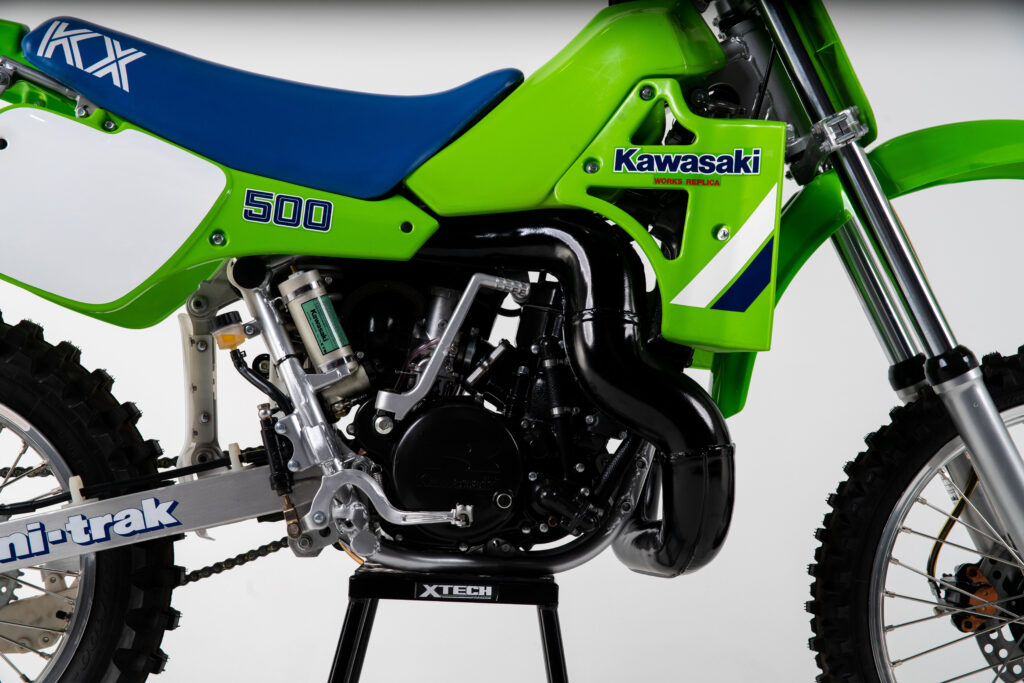
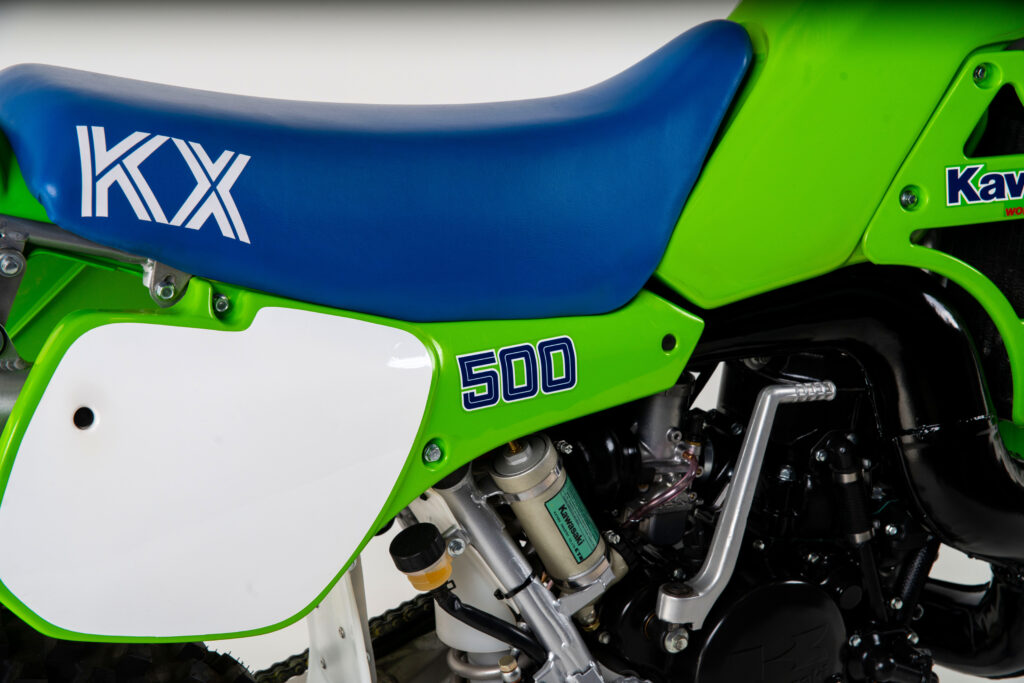
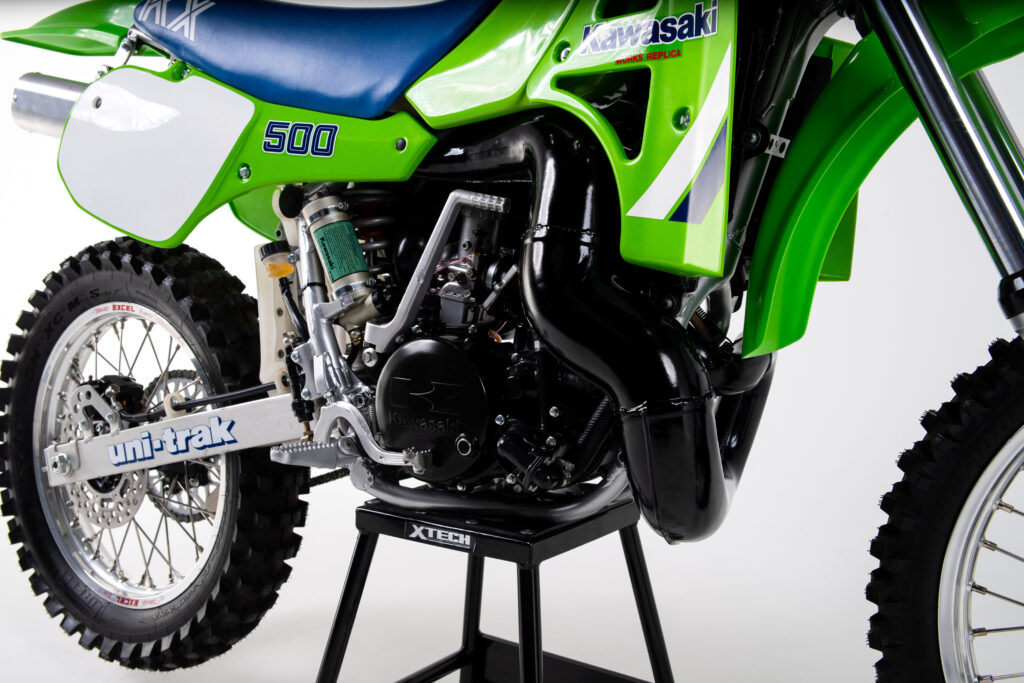
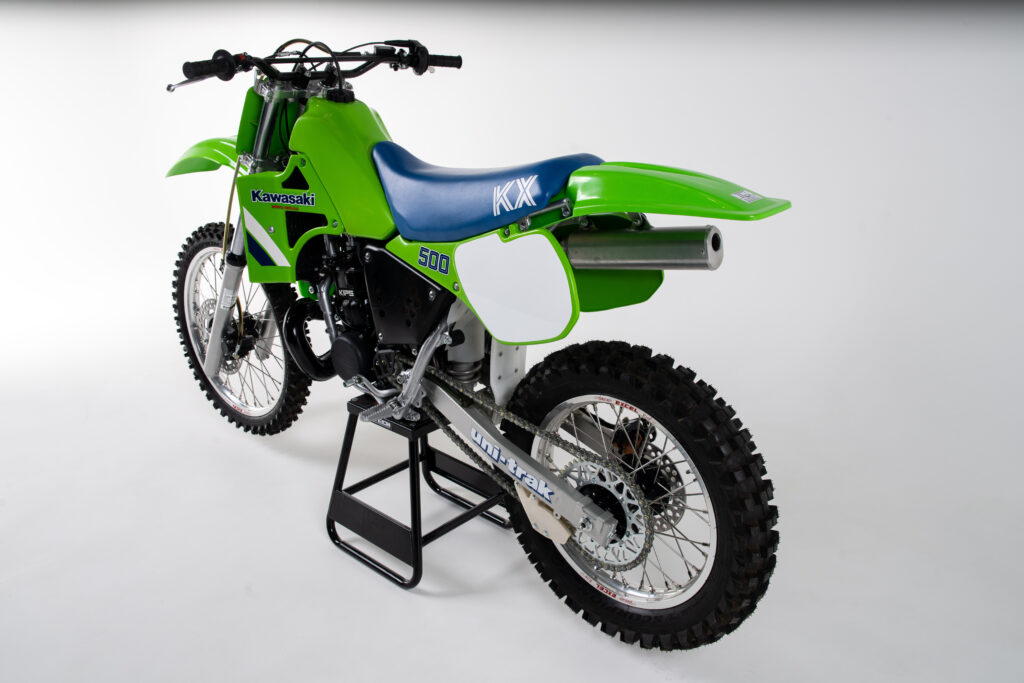
ASSESSING THE DAMAGE
Garage 11 acquired this bike in early 2019, and it appeared as though it had been sitting at the bottom of a dam for the past couple of decades. Much of it was missing, and the remaining parts were in seriously bad shape.
Restoring bikes from the ’80s is always a challenge. Information about them is becoming scarce, and since these bikes were often only produced for a year, many parts have not been reproduced by aftermarket companies, making them difficult to find. We began by stripping down what we had so we could assess what we could salvage and what we needed to find. The frame, for instance, needed to be sandblasted to assess its condition and what lay beneath the paint. Fortunately, the frame was in really good shape, with just a few minor threads and bits needing repair. It was then coated in a factory silver color.
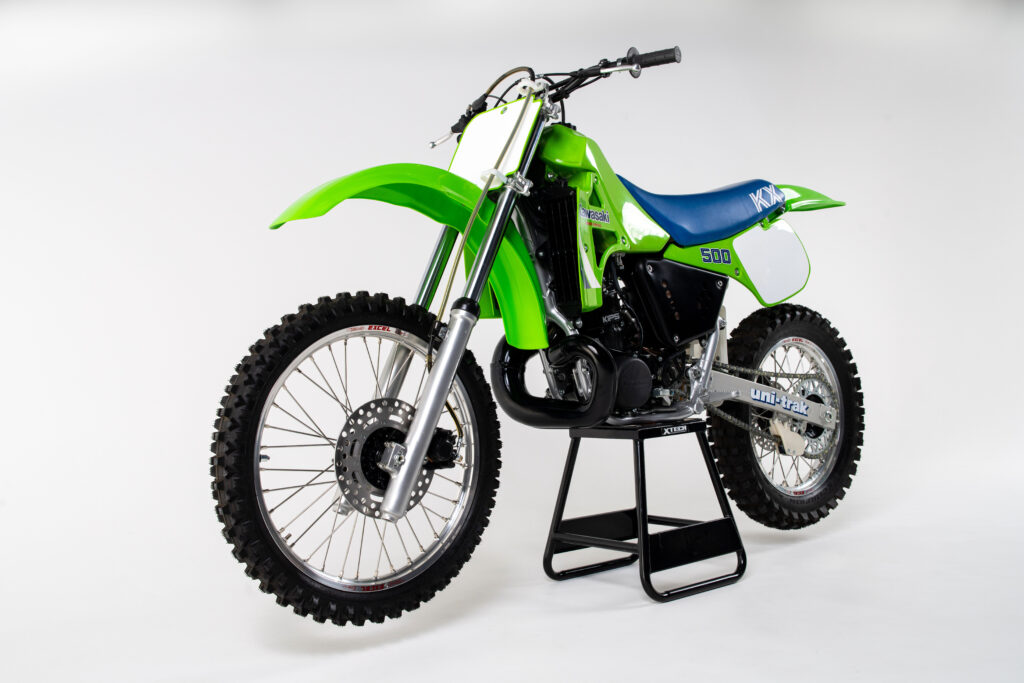
While the frame was being worked on, we noticed that the front forks were in bad shape, so they had to be sent away to be re-chromed and surface ground back to their specifications. We also refinished the lower tubes by hydro blasting them to achieve a factory-like finish. The internals were serviced, and all new bushes and seals were installed. The triple clamps were hydro blasted, cleaned up, and fitted with new bolts and bearings. Once the frame was back, we could start fitting some of these parts to the bike.
THE POWERPLANT
Next up was the engine. The bottom end and gearbox were in pretty good shape, only requiring the cases and cover to be Cerakoted gloss black and new bearings, seals, and a new rod to be installed. The top end had been bored to its last oversize, so we found the last sleeve available and had it installed and machined to OEM specifications. A new piston and rings were fitted, followed by the assembly of the complex power valve system, which was then installed in the bottom end.
Throughout the restoration process, we constantly referred to parts fiches and photos to determine which OEM cable management components we could order and what was missing in general. When we acquired the bike, it had no air filter box or transfer boot, so we had to find replacements. We miraculously managed to find one at a local wrecker, although it was in poor condition. After polishing it and applying a special plastic paint to achieve a uniform finish, it looked much better. The transfer boot was hydro blasted and came up well. As for the air filter cage, the only one we could find was a 3D-printed replica from the US. It’s incredible what new technology allows us to obtain, and it’s amazing to see the talented individuals who are reproducing these parts.
Once the engine was back in, we turned our attention to the “UNI-TRACK” rear suspension system. Although I wasn’t around when it was in use, from what I’ve heard, it wasn’t the most amazing suspension system to ride on. Even after 36 years, it was still challenging to restore. We managed to find a variety of bushes and parts needed to bring the link and shock back to their original state. Again, we used photos and other references to get the colors as close as possible for all the components and their fasteners. The shock spring was re-coated, and the body of the shock was Cerakoted to match what we believe to be the OEM colors.
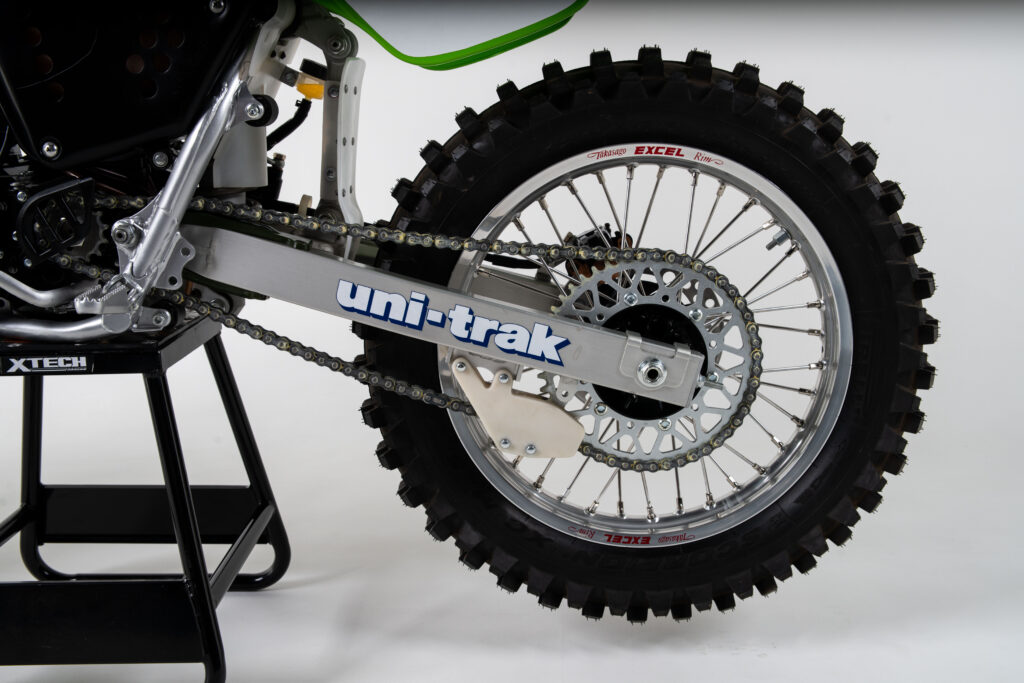
THE NITTY GRITTY
Next, we tackled the restoration of the swing arm, which is never a fun process and always presents issues and problems no matter what you do. After getting it as close as we could to the original finish, we anodized it in a color known as “neutral.”
The hubs were stripped and Cerakoted gloss black, and new spokes and rims were laced to them. Restoring the wheels is generally straightforward, involving the installation of new bearings and re-zincing the axles. Suddenly, it’s a roller again. As a mechanic and restorer, it’s always exciting to see smaller assemblies come together to perform a common task, even if it’s as simple as a dirt bike with functioning suspension and wheels.
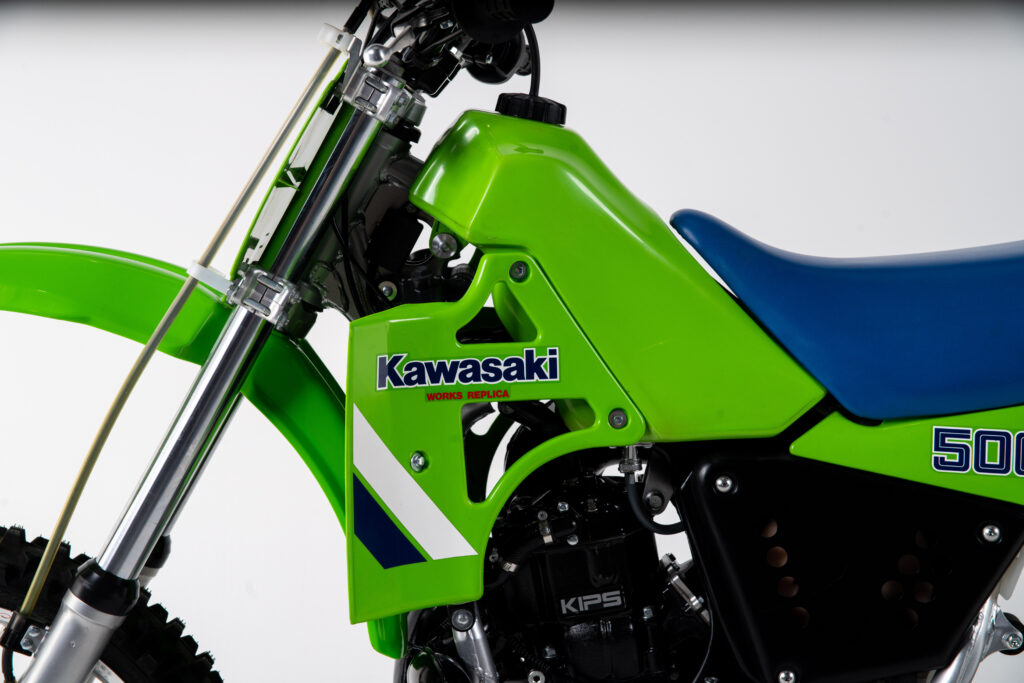
The next challenge was the tank… where do I even start with this one? The tank that came with the bike was a horrible, cracked, oversized enduro tank that had to go. We found a second-hand one from Texas, but it ended up being no good due to stripped threads and costing a fortune. Eventually, we managed to find a second-hand one locally, but restoring it to our desired standard proved to be a struggle. Fortunately, a good friend of ours, who is a master automotive painter, stepped in and restored it to its present amazing state.
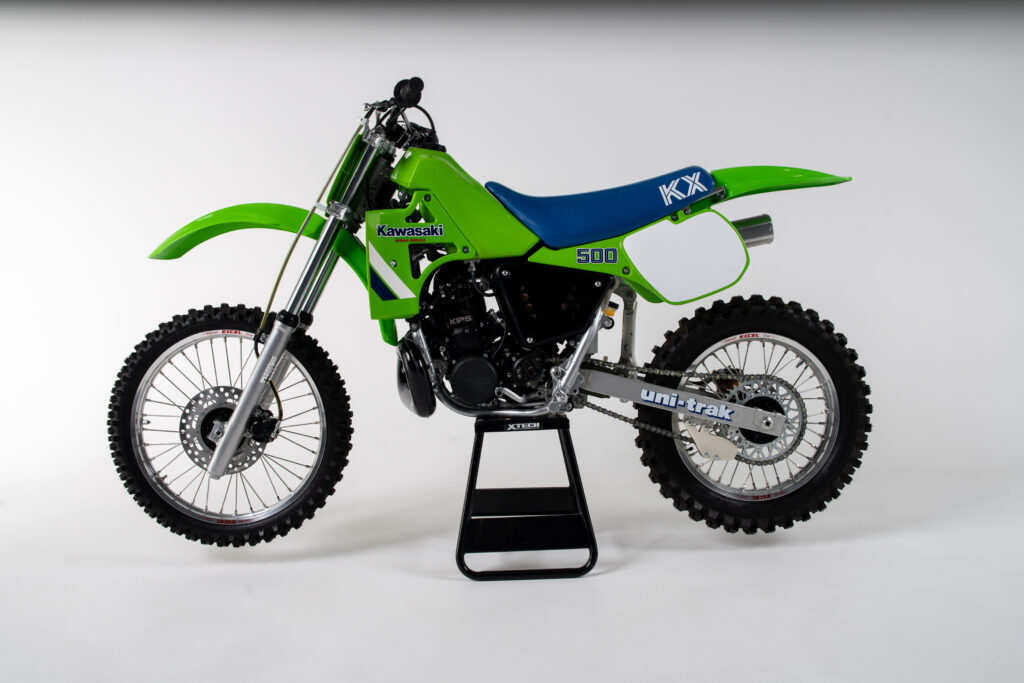
We used aftermarket front and rear guards for the bike, which was fortunate since there are some really poor vacuum-formed replicas out there that don’t work well. The most challenging part was finding good replica side panels. However, a set of new old stock side and radiator shrouds unexpectedly became available in France. Despite the eye-watering price, we couldn’t resist and ordered them. Opening the factory Kawasaki bags they were packed in felt almost impossible, but once we did and fitted them to the bike, it was love at first sight. It was one of those sit-back-and-stare moments.
After all the excitement subsided, we still had to find an exhaust for the bike. At that point, the only pipe that would look right on it was an original one… “sigh.” So, we embarked on a hunt and managed to find one on the East Coast of the US. It was in really good shape, so we had it sent to our friend Pete in California, who then shipped it over. Finally, it went to Paul at Prime Pipe Works here in Victoria to be restored to near-new condition. Paul is a wizard when it comes to all things pipes and mufflers.
Once the restoration was complete, it was time to fire up the bike. If you haven’t experienced the level of compression an ’86 KX500 has, it’s hard to comprehend just how brutal it is. As a point of comparison, a mid-’90s CR500 has a compression ratio of 6.8:1, while this monster boasts a compression ratio of 8.4:1. If you’ve ever started one of these beasts, you know what I mean. Once it fired up, it emitted that incredible idle sound characteristic of a big-bore two-stroke. It’s a sound that cannot be adequately explained but is simply perfection.
In conclusion, I would like to extend my sincere gratitude to everyone who helped bring this restoration together: Paul at Prime Pipe Works, Marshall Smith at Garage 11, Dao Radivo, Max Peters, Rob Kollosche, Pete Jesina, MTO Repairs, SP Moto Seats, Melbourne Anodising, Marty at VMX Decals/Stickers, and the amazing guys at CMSNL.
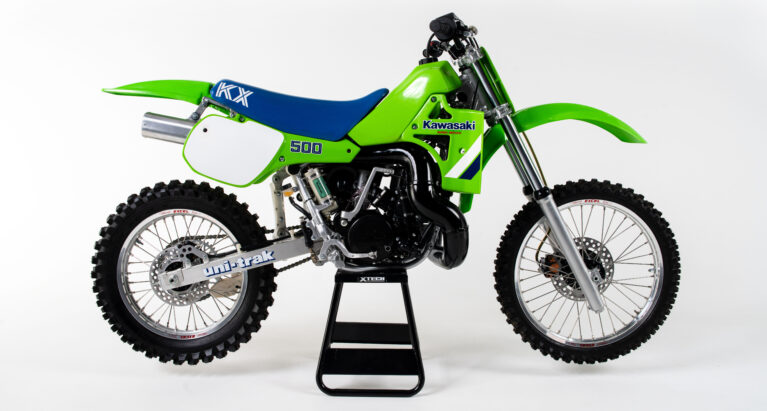
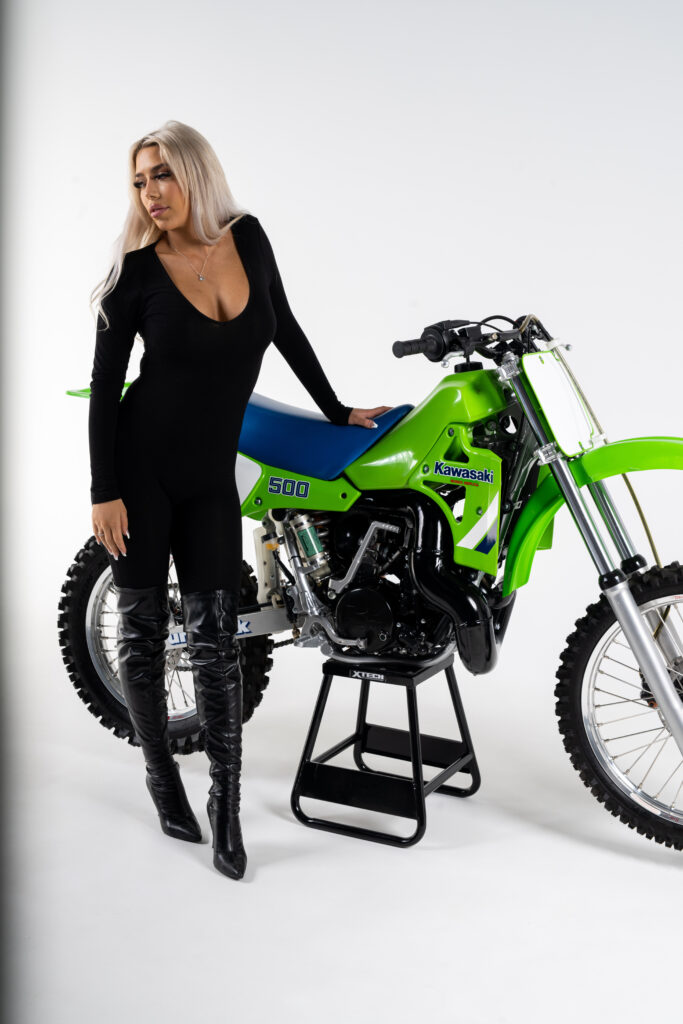
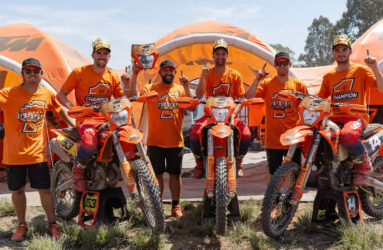


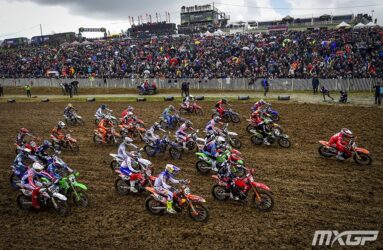
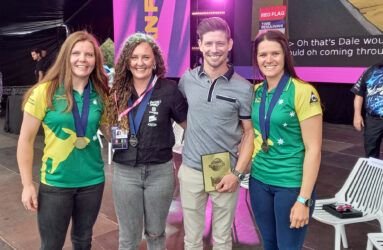
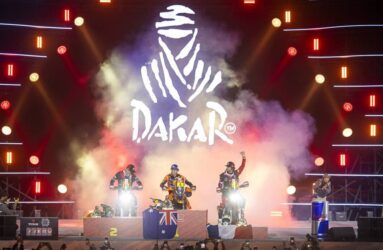
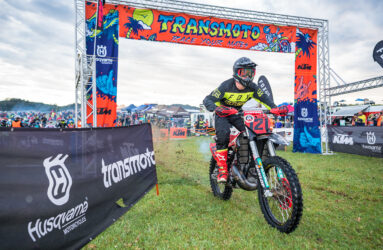

Be the first to comment...